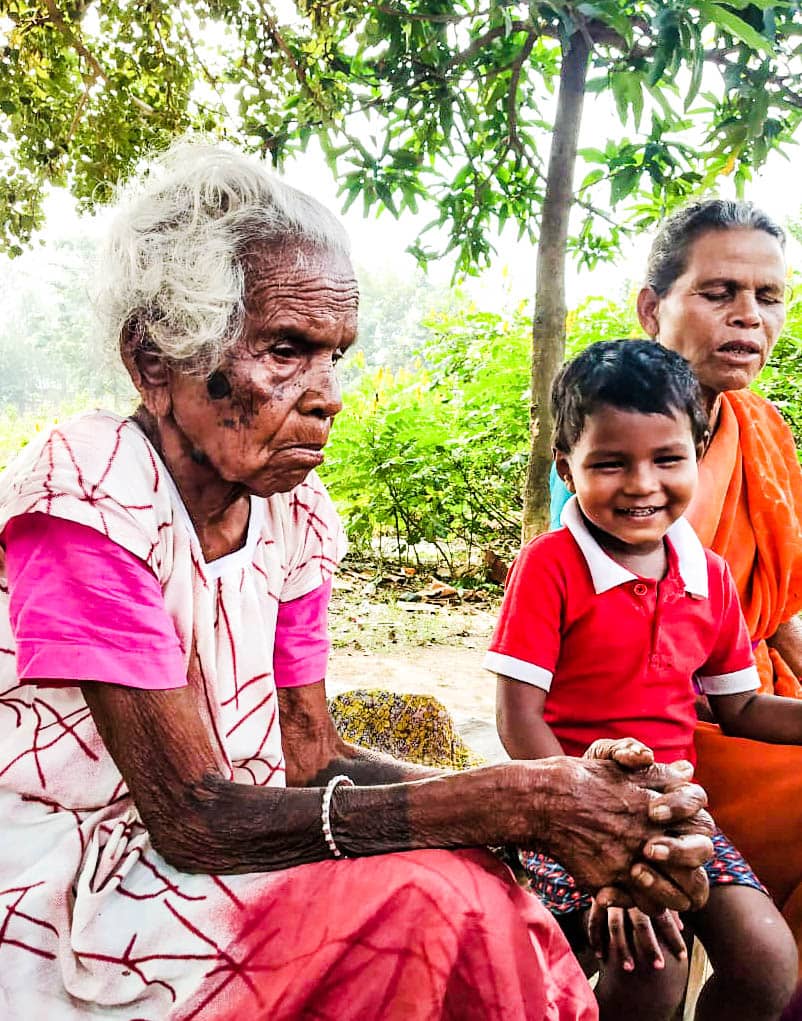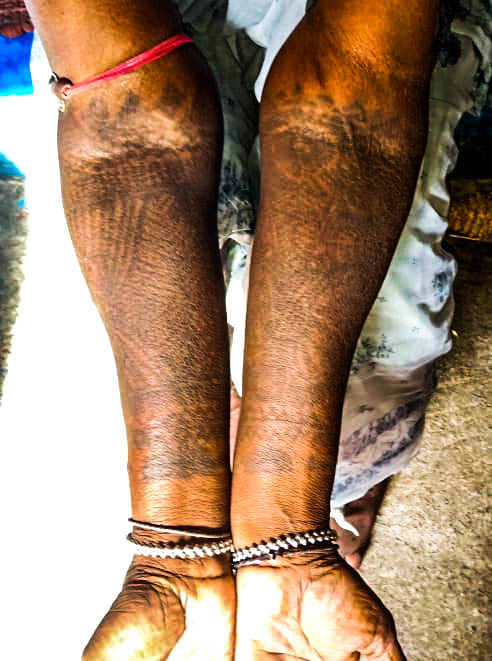Tattooing is an art of inking a person’s skin as all of us know, and people have been practising this art since ancient times. Not just Santals, but many aboriginal tribes from around the world have their unique form of tattooing.
Nobody has a clear idea of how this custom began and why. But, through time, the process, and the meaning of tattoos, changed. And now we are in a time where it is a fashion. Recently, tribal tattoos have gained considerable popularity. You will find a lot of tribal tattoo designs in a tattoo parlour.
In olden days the tattoo was a sign of community, pride, ethnicity and beliefs. Different tribal communities have their own story and their way of making tattoos. Today, very few tribal communities from all over the world still perform their traditional way of making tattoos.
These traditional tattoos are a dying art and soon going to be extinct in a few generations.
In this article, I will focus on tattooing and its significance in the Santal tribe.
Significance of tattoos in the Santal community
For a Santal woman, her tattoo is a wealth that she takes to her afterlife. They believe when a person dies and goes to heaven; those tattoos help her survive there.
If you ask any Santali grandma about her tattoo, she will tell you the following story.
“In heaven, when a girl goes to fetch water, there is a frog watchman. The frog will ask the girl what did you bring for me from the earth. Then the girl will take off a bit of tattoo from her body and give it to the frog watchman. Only after that, the frog will allow her to fetch water.” So, the more tattoo a girl has, the richer she is in heaven.


The tattoo on one arm is a gift from her parents and the tattoo on her other arm is a gift from her in-laws.
It is also a mark of pride, faith and ethnicity. Santals treat their tattoos with respect and so tattoos on the feet is forbidden in Santali community.
Watch this video to know more about it.
Most popular tattoos in Santal Women
The traditional permanent tattoos are made of black ink prepared from soot. It is called ‘Khoda’ or ‘Godna’. Santali women tattoo themselves at a very young age because it helps the pain to be forgotten over time.
Various kinds of tattoo shapes are found, but the most common ones are
- Fish-shaped tattoos on the back of the hand, and below the thumb.
- Flower designs on the back of the hand and around the neck like a necklace.
Read: Is modernity a threat to Santal culture?
Process of making ‘Khoda’ or ‘Godna’:
Only women in the Santal tribe can perform the traditional art of tattooing. They call the person ‘Khudni’. It is a secretly guarded skill that they do not share with others and only pass it to their next generation. Therefore, it is becoming a lost art today.


Steps of making traditional Santal Tattoos
- First, she makes black ink paste in a pot.
- She then draws a shape with that ink over the skin.
- After that, she pushes the ink inside the skin with sharp tattooing instrument, which is nothing but a few needles tied together.
- Finally, after tattooing, she applies a mixture of turmeric and mustard oil, followed by a paste of some herbs to prevent swelling.
Read: Santal Rebellion: The Santal Hul
‘Sika’ the Burn mark for Men
Men are not allowed to ink their body in Santal Tradition.
They have round coin-shaped burn marks called “sika” on their left forearm. It serves the same purpose of surviving afterlife as women’s tattoo.
The number of sika or round burn mark should be in an odd number (up to seven) as the odd number indicates life and even number means death in the Santal community.


Process of making sika
- A roll of rag like a cigar is made (mainly of cotton).
- Then it is put on the forearm of the left hand where the mark should be and is set on fire.
- The skin gets burnt slowly from the heat and smoke.
- When the arm burns enough to leave a mark, then they throw away the burning cloth and cover the spot with burnt cotton ash. The ash helps with the healing process.
- A blister forms over there and it remains sore for a few days.
- When the wound heals, it leaves a round-shaped mark.
Are ‘Khoda’ and ‘Sika’ now lost art?
Because of the curse of discrimination towards their caste and injustice for ages, most Santals today do not practice their customs to come into the limelight of mainstream lifestyle.
Today, ‘Khoda’ and ‘Sika’ have become a rare practice. As I said before, Khudni does not share their art of tattooing with others. They consider it as their heritage, and because of their indifference, it is now becoming a lost art.
Conclusion
Although the tribal tattoos are gaining popularity, people today wear them for fashion without knowing the culture, stories and meanings behind them.
In India, Santals are categorized as primitive and are often not respected. For that reason, the coming santal generation is slowly moving away from the culture and traditions of which we were once proud of. Though change is inevitable and intermingling of cultures are bound to happen over time, but at least knowing these stories and folklores help us keep the spirit alive in our minds.
That’s all for today. If you have anything to add or ask, let me know by commenting in the section below. And, if you like the article, do not forget to share it with your friends and family.
Listen to the audiobook:
